John Brooks and Audrey Tan, Swamp Breathing
Amelia Winata
John Brooks and Audrey Tan’s current exhibition, Swamp Breathing, is located in BLINDSIDE’s main gallery in the Nicholas Building. A set of large windows overlook the massive Metro Tunnel construction site, which on the day I visited was in full action. The sounds of drilling and hammering drifted up to the gallery’s seventh floor location, an aural cocoon that comforted me with the simultaneous proximity and distance of the space to the city below. These sounds accidentally lend to the experience of viewing Swamp Breathing. This is an exhibition that tries to carve out a small respite from the disarray of late capitalism and its offspring—particularly consumerism.
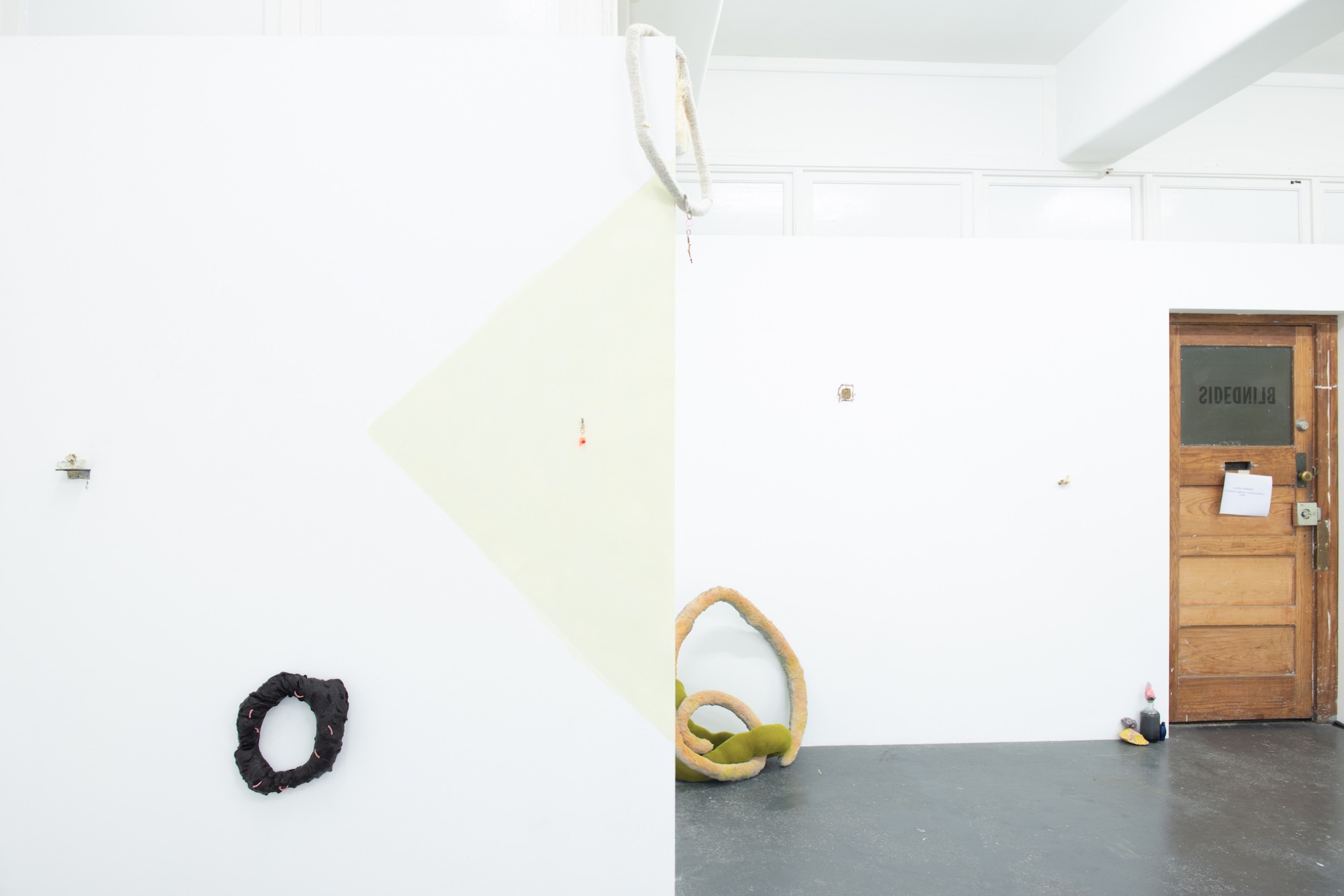
The exhibition is comprised of a myriad of small sculptures that address the logic of what Tan calls “reborning objects”—taking mostly very banal objects and re-formatting them in curious combinations. They dot the walls, floor, rafters and windowsills. A quiet dissonance is present in each of the works, due largely to the way in which the artists have combined organic and human-made materials in Frankenstein-like patchworks. Pebbles and polystyrene make odd bedfellows, as do lint, date pips and metal shards. Despite this, the works are soothing. I can’t quite put my finger on how this tension between dissonance and comfort manages to uphold itself—but I think that is maybe the quiet power of Swamp Breathing.
The works encompass the artists’ respective formal backgrounds. Brooks studied textiles and drawing, while Tan studied painting before moving on to metalsmithing. This is the third exhibition that the pair have collaborated on since 2018—their first collaborative exhibitions were in the Trocadero stairwell (2018) and the Campbell Arcade Dirty Dozen vitrines (2018–19) and in a shop window in the Cathedral Arcade (2019). Swamp Breathing is therefore their first exhibition in a “traditional” gallery space—albeit one that sits slightly outside of the white cube convention (BLINDSIDE is classified as an ARI). The gallery has been sporadically painted a very pale green, as though in quiet protest against traditionally white walls. But this painting also serves to emphasise some of the innumerable tiny ready-made assemblages that line the walls, which remain invisible to the viewer until they are right up close to them. Take, for example, a small charm made from pink acrylic and a vending machine ring, which is only rendered visible from afar by the large green triangle painted behind it.
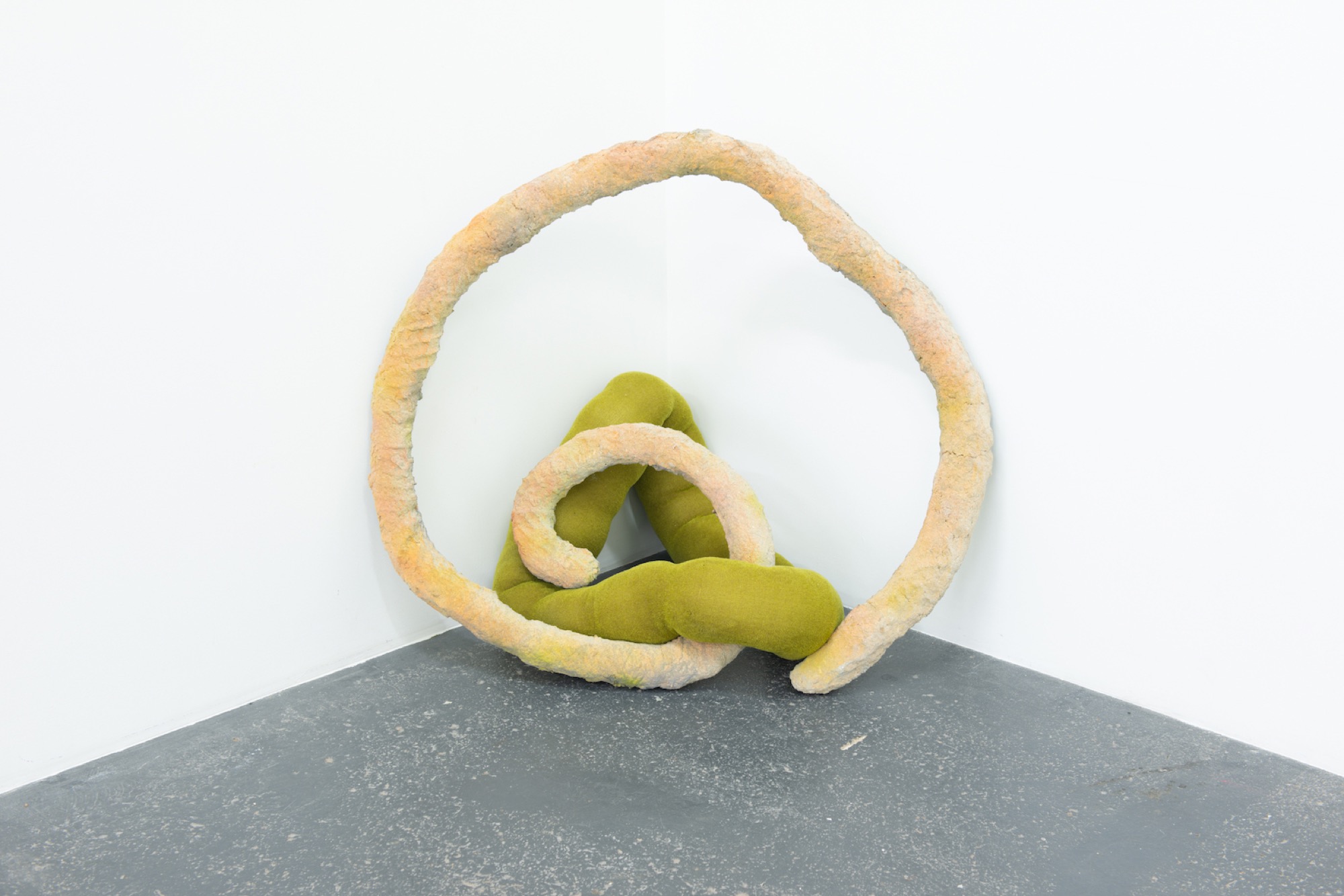
As delicate as it is, work such as Brooks and Tan’s is often at risk of falling into the category of what we art critics sometimes call—mostly in jest—“random stuff on the floor”. Here however, the objects, while seemingly arbitrary, have been dispersed around the gallery with a sense of purpose, or perhaps site specificity. And so, despite the very haphazard nature of the artists’ material choices and combinations, the exhibition avoids all-out anarchy. Nestled into one corner of the gallery, for example, is a sculpture comprised of two soft interconnected hoops—one made from moss-green machine knitted acrylic, the other from paper pulp sprayed an unidentifiable brownish orange-pink—which fit so snuggly into the space (one otherwise shunned by traditional exhibition making) that they appear to be simultaneously in an intimate relationship with one another and growing out of the corner they inhabit.
The life-like qualities that we imbue inanimate objects with is a central concern in Swamp Breathing. In his biography accompanying the exhibition, Brooks writes that he is interested in “potentially projecting thoughts and ideas on to non-human entities”. In relationship to Swamp Breathing, we might consider this a form of anthropomorphism—a concept usually defined as the attribution of human-like qualities to an inanimate object. Installed at torso-height, for example, is a small sculpture about the size of a matchbox that I can’t help developing very warm feelings towards. Comprised of an olive plucked from a tree, a fish bone, some paper pulp, a plastic gem and a piece of pea gravel assembled on a small piece of spray-painted polystyrene and attached to the wall with a delicate, purpose-made titanium hook, it looks like a scene in which small creatures are interacting with one another—the roundness of each object standing in for a head. Of anthropomorphism, the art historian Dario Gamboni has said that this way of seeing often gets a bad rap because it is viewed as a product of the artist and/or viewer’s “misguided perception”. The turn away from anthropomorphism may also hinge upon the ick-factor of individualism in the age of Trump, BLM and irreversible climate change—a kind of antithesis to the modernist ideal of collectivism, making it therefore a form of narcissism.
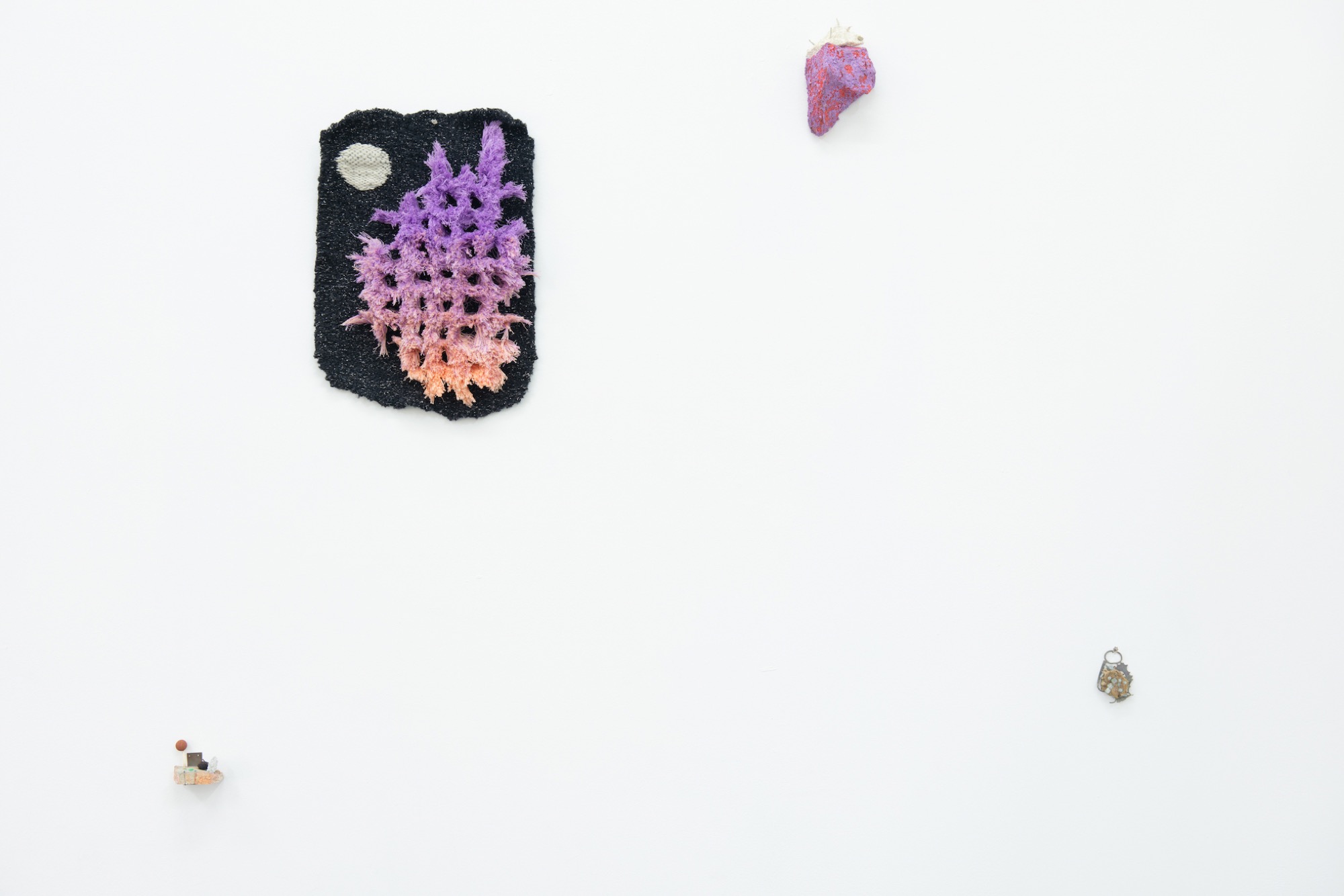
However, there is also a case to be made for anthropomorphism. It has been said, for example, that anthropomorphism is a means by which the creator and/or viewer produces a relationship with the (art) object. This is something that was labelled “the aesthetics of empathy”, by nineteenth-century German philosophers like Robert Vischer, who in 1873 argued “With organic nature, empathy functions symbolically to animate a plant and to anthropomorphise an animal”. We might add to Vischer’s description of symbolic empathy the animation not only of plants or animals but, also, of inorganic materials—as we see in Swamp Breathing where human-made materials also take on life-like qualities: making it an anthropomorphism specific to an age of plastics and electronics.
I suspect that even in this post-covid (or, at least, post-lockdown) moment, any discussion of recent Australian art will continue to make reference to the events of 2020. This review is no exception. For the most-part, the works in Swamp Breathing were produced during lockdown. As a result, they are equal measures of anxiety and tenderness. The brittleness of the pieces, the threat of them breaking at any moment or even simply being lost—I am thinking in particular of thumbnail sized unfired ceramics that the artists assembled along the gallery’s windowsill—speak to this binary. Indeed, there was a moment when Tan and Brooks were unsure if Swamp Breathing, which was scheduled for 2020, would happen at all. One can therefore imagine that the pieces that they created during this limbo served as more instant forms of comfort to the isolated artists. And it is consequently wholly possible to imagine the greater urgency with which the pieces were created as immediate stand-ins for the absent human bodies in each of their lives.

A poem by Panda Wong entitled Save all the Soft Things accompanies the exhibition. It is immensely funny and also painful, and speaks to the sticky relationship that we have to things in late capitalism—which embody both burden and comfort. The poem points to the objects exhibited in Swamp Breathing as the embodiment of this conflicted relationship. Here is an excerpt:
loaves of Subway bread
baked with the same chemicals
as yoga mats & the underneath of carpet
the off brand plushies that i won
in a dark time of my life, a mild crane game addiction
characterised by the rapacious guzzling of coins
save all the soft things
save all the hard things
they deserve to be held
Even if these products are the result of capitalism’s greed, Wong suggests, they can still occupy a special place in our lives. They are rarely one or the other. Indeed, the title of the exhibition points to the binary tension of late-capitalistic wellbeing. “Swamp” prompts images of disease, stagnation or illness, while “breathing” elicits associations with wellness, such as perhaps yoga, that have become coping mechanisms for daily-grind, middle-class existence. In actuality, swamps do breathe—the process is commonly known as “bog breathing”—and they have the ability to mitigate climate change by storing large amounts of carbon. In Scotland, the destruction of peatlands to make way for tree farms has been linked to massive releases of carbon—a swamp exhalation of types—that has damaging effects on nature. All in all, the various associations we can make with Swamp Breathing’s title paints an image of the far-reaching implications that human interventions into environments have on our wellbeing.
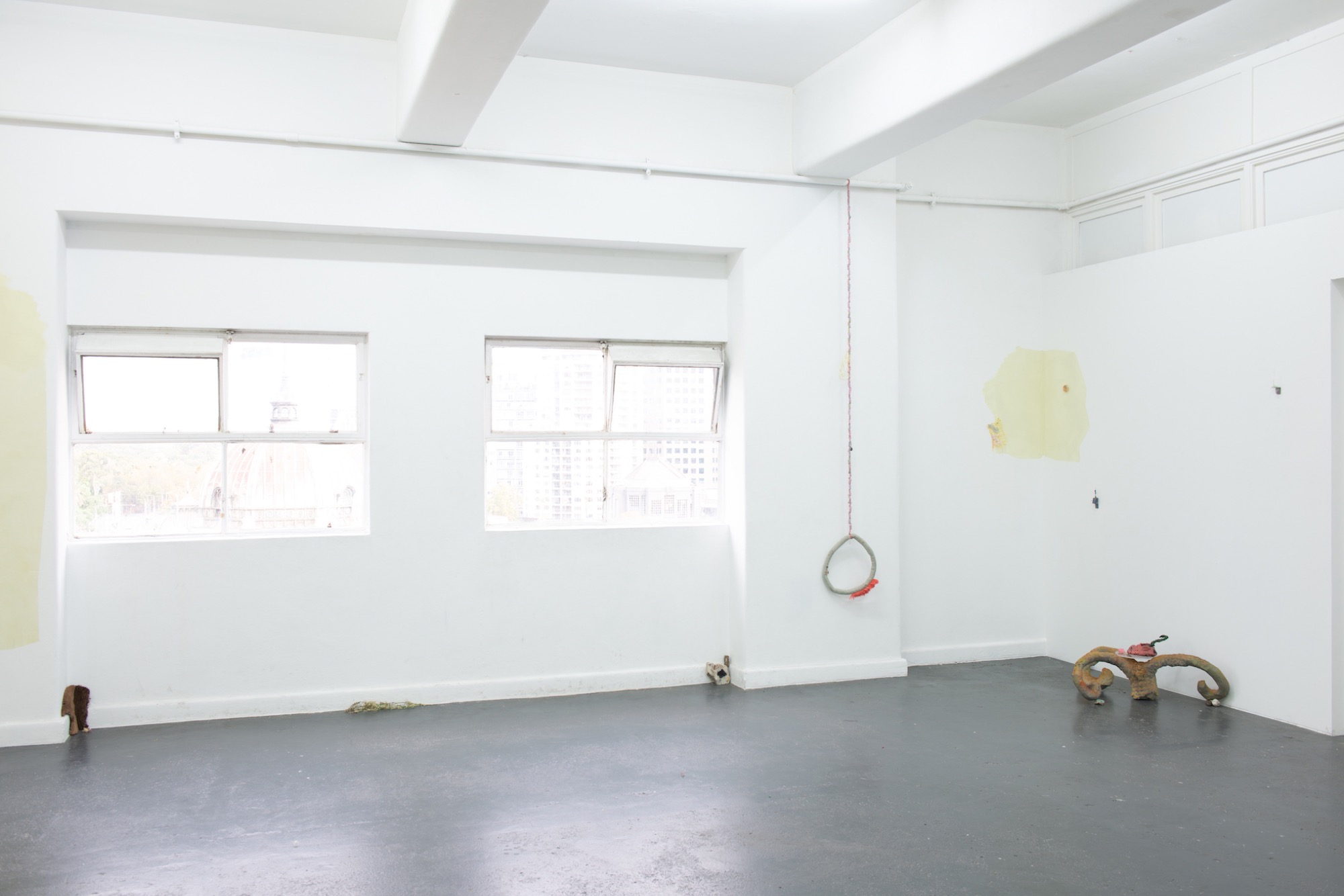
It might be said that Swamp Breathing joins the ranks of other recent exhibitions with an emphasis upon care and feeling. I am thinking, in particular, of Zara Sigglekow’s Great Movements of Feeling (Gertrude Contemporary, 2018) or Notions of Care, currently on show at Bus Projects. The difference between these exhibitions and Swamp Breathing, however, is that there is an immense sense of solipsism at play in the latter. The delicate, anthropomorphised sculptures appear as stand-ins for the absent human form—or the absences of interaction—brought on by the pandemic. And while this is a collaborative exhibition, the works coalesce as a single, yet multi-faceted entity—which is probably the result of Brooks and Tan’s familiarity with one another allowing them to operate not so much in dialogue but in a double-pronged monologue.
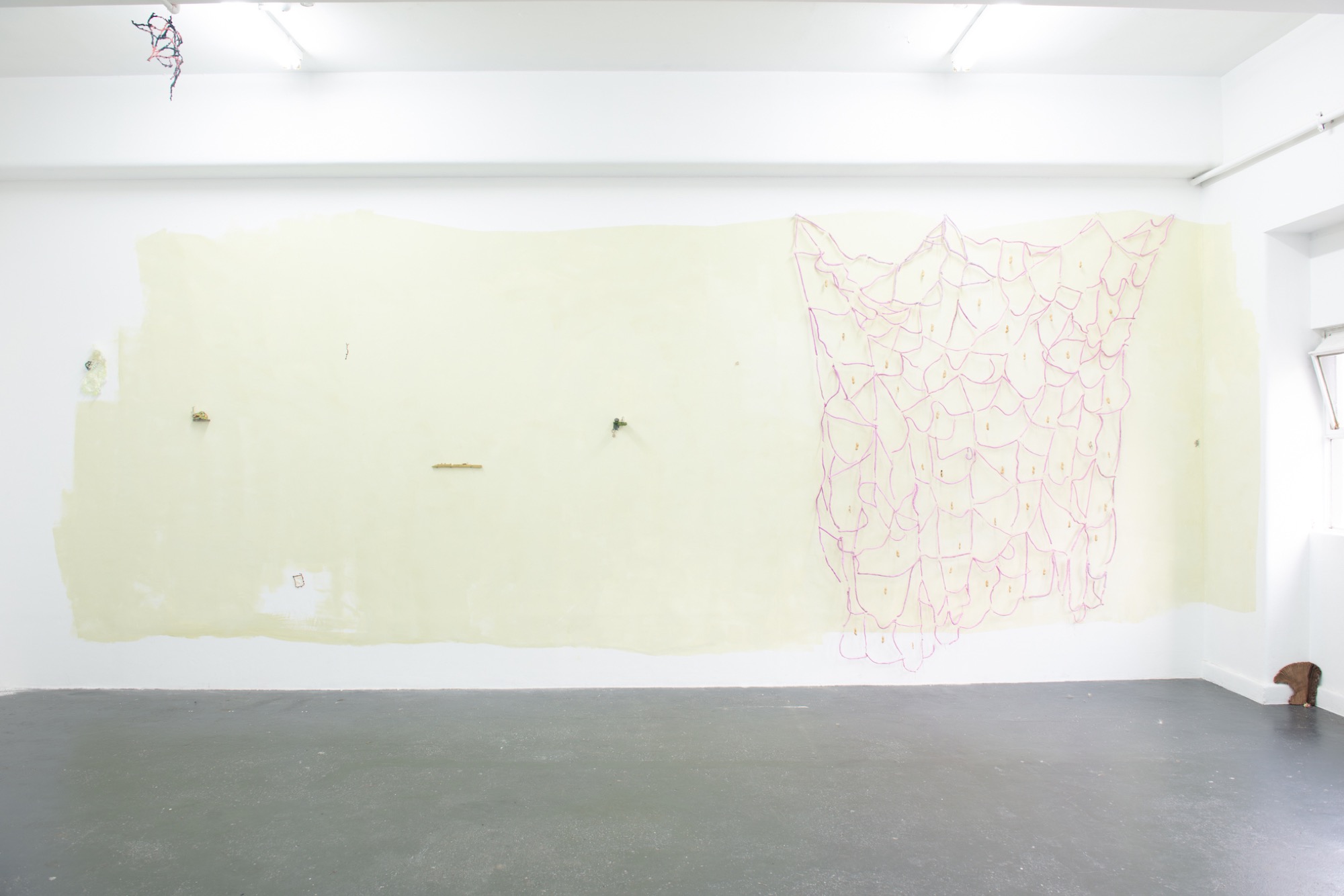
The largest work in Swamp Breathing is a net of sorts composed of a plasticine-like material made from cornflour, lemon juice, PVA, baby oil and lurex, and which has been coloured a candy pink. Interspersed in the gaps of the net are peanut shells, which dangle from string and sway in the presence of viewers. Finally set free into the public realm after its pandemic conception, we are reminded of the bureaucracy tied into late-capitalist viewing experiences when, upon entering the gallery, we are confronted with a sign placed on the wall by BLINDSIDE that reads, “ALLERGY WARNING. The exhibition in gallery 1 contains peanut shells”. The anthropomorphism at play in Brooks and Tan’s sculptures are a means through which the artists have attempted to process these late-capitalist frameworks that include such over-policing as this peanut sign. Surely, the anthropomorphism of objects that no longer have use-value suggests a way in which to navigate not only “contemporaneity”, but a contemporaneity of solitude in a (paradoxically) perversely connected society. The lines between care and over-policing, consumerism and that idiom-du-jour “self-care” will only continue to blur with time. But Brooks and Tan do not choose which side to sit on. This is beautifully summed up in Wong’s poem:
someone once told me that life is just
rearranging yr belongings into many
infinite configurations until u die
i don’t know. too cynical for me… too annoying
don’t forget that the world is a place where we live.
Is it possible to be critical of the system we exist in and also survive by finding facets of it to appreciate? Brooks and Tan at least try. The message reads: do what you have to do to get by—and if you happen to enjoy yourself along the way, well done.
Amelia Winata is a Narrm/Melbourne-based arts writer and PhD candidate in Art History at the University of Melbourne.


